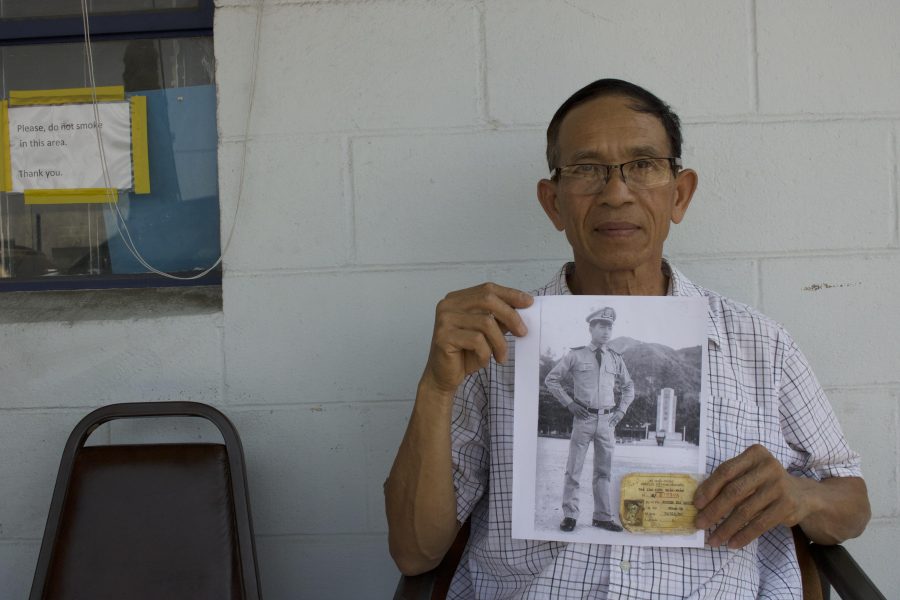Emma Spencer ’18 led her Photography III class in creating a photography show focused on the Vietnam War, those who were involved in it and the effects it continues to have on the U.S. to this day.
The show, titled “Vietnam 50 Years Later: Then and Now,” will be installed in Feldman-Horn Gallery Jan. 12, with an opening reception the following week.
Spencer and her classmates photographed veterans and others involved in the war. The gallery will feature biographical write-ups of the subjects the students interviewed and photographed.
Spencer began working on the exhibit over the summer after her internship was canceled, giving her time to interview veterans. Visual arts teacher Kevin O’Malley encouraged students to begin interviewing Vietnam veterans in light of the recent Ken Burns documentary about the Vietnam War, Spencer said.
At first, Spencer was only able to talk to American veterans, who she was able to access through her grandfather who had served in the war. She was able to talk to a wide variety of American veterans in the Vietnam War in order to showcase the varying roles people played in the conflict.
“I interviewed people from my grandfather, who was on a minesweeper, to pilots who were part of the Laos-Cambodia illegal bombing, to a doctor who saved people off a ship,” Spencer said.
“I was just kind of going around and learning these incredible stories and taking photos of people.”
After learning more about the history of the war, Spencer thought she should expand her interviews to include Vietnamese subjects to give a more balanced look at both sides involved in the war.
Once Spencer returned to school, she got the rest of the class involved in the continuation and expansion of the project.
During the process of interviewing and researching for the project, Spencer was able to gain a greater understanding of the topic covered in the school’s U.S. history classes.
“[The exhibit] is just going to try to make people understand the effect [of the war].” Spencer said. “When I was learning about this and researching, I started getting sucked into this vortex of understanding how these people had to deal with what was going on. We were in a place we didn’t need to be in, fighting a war we didn’t need to be fighting, and we were losing teenagers, which is crazy to think about.”
The exhibit is a chance for people to educate themselves on the Vietnam War and the lives of those involved, as well as what the war means as a part of the history of the United States. Other educational resources will be available in the gallery as another means for those who are interested to learn more.
The aim of the exhibit is that people will gain a greater understanding of what happened during the war. Books about the Vietnam War will be in the photo gallery for people who would like to read and learn more about the war.
The upper school librarians have also agreed to a teach-in as a part of the exhibit. During the war, students were educated on the war by teach-ins because many college students were unaware of the details of the Vietnam War.
Spencer said she hopes to shed light on the negative aspects of the war in order to educate other students on the country’s history.
“The show is going to deal with issues from the war itself and the race riots that were going [on],” Spencer said. “We interviewed some teachers which was really interesting. We are going to try to cover all the different parts of the war and I think that it’ll be really cool.”
Spencer said this exhibit is important because it depicts a time when life was very different, especially for teenagers and young adults.
Spencer said the exhibit is especially important for seniors.
“In 1968, most of our grandparents were dealing with the issue of ‘should I go to Vietnam or not?’” Spencer said. “They were put in a position as graduating seniors of potentially having to go to war the next year. [Imagine] you’re having a fun second semester as a senior, and you get a draft letter. How do you handle that?”































